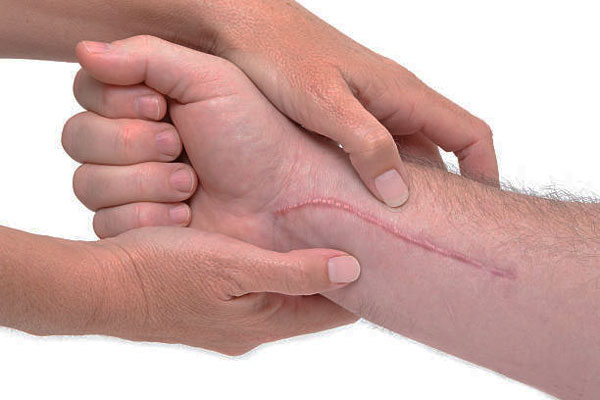Hand & Wrist Ligament Reconstruction
Our hands and wrists are made of several small bones that are held in place with the help of ligaments. Ligaments, which are strong tissues, link one bone to another. They also help in controlling the movement of bones and stabilizing joints.
Damage to the ligaments may result from a fall on the outstretched hand or during certain sports such as rugby or skiing. It may also occur due to other conditions, such as arthritis. This disturbs the normal alignment of the bones in your wrist or hand, resulting in pain and inflammation that may continue for several weeks. The affected area may also appear bruised or discolored. When the ligament injury goes undiagnosed or is left untreated, the joint involved may heal improperly, resulting in prolonged pain and a clicking sound in the wrist while performing certain actions, such as gripping.

What is ligament reconstruction?
Ligament reconstruction refers to correcting the damaged ligament. The procedure involves making an incision at the damaged area and replacing the torn ligament with a tendon graft obtained elsewhere from the wrist. Sometimes, metal pins are also required to restrict the bone's movement as the tendons heal.
Indications
The need for ligament reconstruction depends on the extent of the trauma. Partial tears in the ligament are best managed through conservative treatments, including rest, icing, medications, and a brace to limit the movement. thus, reducing stress on the ligaments. Strengthening exercises for the muscles surrounding the joint help stabilize the joints. However, ligament reconstruction may be necessary when conservative treatments fail to provide relief even after two to three months or in other conditions such as:
- Complete ligament tears.
- When the ligament tear was discovered six months or more after the injury.
- Pain or instability of the joint under rest or with daily activities.
- Carpometacarpal (CMC) joint arthritis (arthritis at the base of your thumb).
- Degenerative joint diseases.
How is it performed?
If you are advised to undergo ligament reconstruction, specific instructions, and basic procedural guidelines are recommended. Adherence to these guidelines ensures safe and successful treatment.
Before the procedure
- Follow the guidelines about the use of medications or herbal products as provided by the doctor.
- Stop using over-the-counter medications (aspirin or ibuprofen) at least seven days before the surgery.
- Stop eating or drinking anything prior to the surgery, as recommended.
- If you are using a splint or brace, it is removed before the surgery.
- Make arrangements for a ride home after the surgery.
On the day of the surgery
- You will have to report to the hospital at the scheduled time.
- Remove any jewelry or other accessories, such as glasses, etc.
- You might have to put on a hospital gown.
- You will be moved from the preoperative area to the operating room.
During the procedure
- Depending on the procedure, either a local or general anesthetic is used.
- The surgeon makes an incision in the affected area to locate the ligament tear.
- A tendon graft is obtained and used to replace the torn ligament.
- The graft is usually harvested from the bottom of the same wrist through one or two small incisions.
- It is grafted to the damaged ligament, and metal pins may be used to support the repair during the healing process.
- The incisions are closed after the surgery is finished.
- A splint may be placed to immobilize your wrist until complete recovery.
Post procedure
- Keep your hand or wrist in an elevated position above your heart level as much as possible for the first few days to prevent excessive swelling and pain.
- Instructions regarding wound care will be given. It is important to keep the operating area clean and dry to prevent infection.
- You need to use pain medication and antibiotics to prevent infection.
- The metal pins implanted may be removed after six to eight weeks.
- Thysical therapy may be recommended to strengthen your wrist or hand and rebuild strength in your muscles.
Long-term recovery
Prompt surgical intervention and post-surgical care remain the mainstays of better outcomes with ligament injuries. Recovery from ligament reconstruction may take four to six weeks. You are not allowed to perform any actions with the operated hand until you are advised to do so. After six weeks, the pain and inflammation may subside. You may use the splint at night and remove it during exercise and daily activities. Physical therapy performed as recommended helps improve functional recovery. It is important to avoid sudden and jerky motions. You may obtain the full range of motion between nine and twelve weeks. Splint usage may be limited for the night, and you may return to work with the doctor's advice.